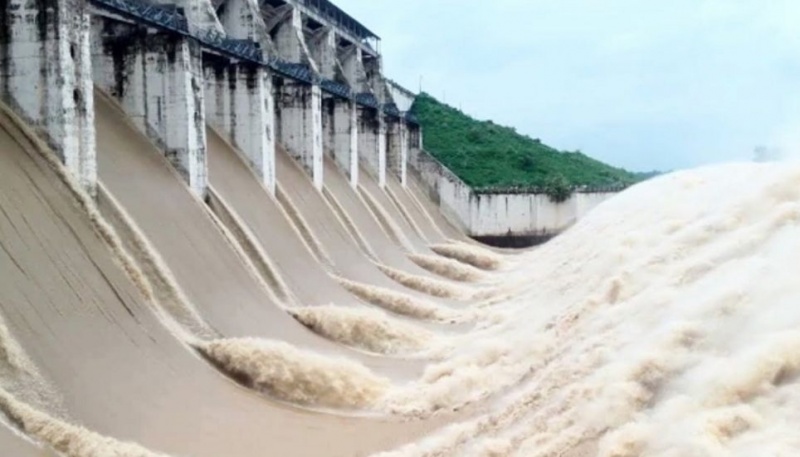The sudden opening of all gates at India’s Farakka Barrage is set to release 1.1 million cusecs of water into Bangladesh within a single day. The gates has opened on Monday, August 26, raising concerns about severe flooding in several districts across the country.
M. Anwar Hossain, Director of Riverine People, a research organization focused on river systems, expressed alarm over the news. He warned that the influx of water could inundate districts such as Rajshahi, Chapainawabganj, Pabna, Sirajganj, Kushtia, Rajbari, and Manikganj, among others.
Rakesh Pandey, General Manager of the Farakka Barrage, stated that the barrage authorities have been on high alert. He explained that the pressure of water increased so rapidly that failing to open all 109 gates would have put immense strain on the structure, potentially causing significant damage. Currently, 40,000 cusecs of water are being released into the feeder canal, and 1.1 million cusecs downstream.
The barrage authorities reported that the water pressure had risen due to floods in neighboring Indian states. However, they noted some relief as the mountainous torrents from Nepal had not yet arrived. With the water level in the Farakka Barrage area flowing 77.34 meters above the danger mark, opening the gates became a necessity, leading to an increased water release into the feeder canal as well.
In a related development, heavy rainfall and the resulting flash floods from India have caused a sudden increase in flooding in Bangladesh’s southeastern regions. The death toll has risen to 23 across 11 affected districts, with over 5.7 million people impacted.
According to the latest report from the Ministry of Disaster Management and Relief, the floods have left approximately 1.24 million families stranded across 74 upazilas in Feni, Comilla, Chittagong, Khagrachari, Noakhali, Moulvibazar, Habiganj, Brahmanbaria, Sylhet, Lakshmipur, and Cox’s Bazar.
The situation is being closely monitored, with authorities urging residents in the affected districts to remain vigilant and prepare for potential worsening conditions.

